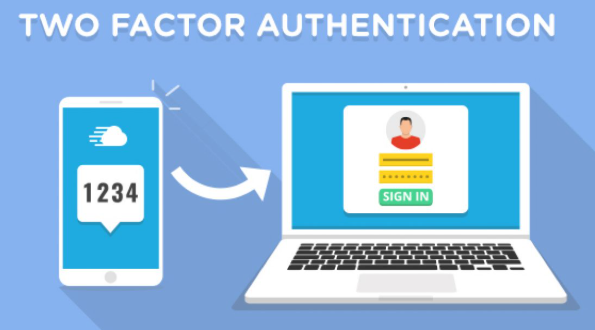Cybersecurity in the modern digital world is not an option. As hacking, phishing, brute-force attacks, and data breaches all become more and more likely, securing your online accounts and, in particular, your WordPress site is becoming paramount. Two-Factor Authentication (2FA) is one of the most effective means of making your online security better.
This tutorial will cover the need of two factor authentication, its operation and all the reasons a WordPress user and owner of a WordPress-based online resource must employ it to secure their digital property.
What Is Two Factor Authentication?
Two-Factor Authentication (2FA) refers to a security procedure that one has to go through by entering at least two distinct identifications to access an account. This would normally embrace:
1. Something you know – such as a password, or PIN.
2. Something you know – such as a smartphone application or physical security key.
The two-step process introduces an additional step in the process of attack, and the unauthorized access becomes much more difficult, even in the case when the opponent already has your password.
Why Passwords Alone Are Not Enough
Passwords are the most common form of account protection, but they’re also one of the most vulnerable. Here’s why relying on passwords alone is risky:
-Weak passwords can be guessed.
-Reused passwords across sites increase exposure.
-Phishing attacks trick users into revealing login credentials.
-Keyloggers or malware can capture passwords silently.
Even complex passwords can be cracked with brute-force tools if left unprotected. This is where 2FA becomes critical.
The Advantages of Two-Factor Authentication
1. Improved Security of WordPress
Unless you are sitting on a rock in the middle of the ocean, you have already heard that WordPress is the most popular target of hackers. Plugging in 2FA in wordpress logins can go a long way in ensuring that your wordpress dashboard is not hacked by an imposter.
WordPress 2FA plugins such as Wordfence, iThemes Security, and WP 2FA are among the most popular, but you can easily install this protection tool.
2. Defenses against Credential Theft
When 2FA is enabled, even when a hacker can obtain your password, it cannot log you in since there is the second factor to be entered, typically a one-time code that is transmitted to your phone or generated in one of the applications.
3. Security Standards Compliance
When you operate an online store or manage sensitive data of users, it can be used to comply with the laws of your industry, including GDPR, PCI-DSS, or HIPAA, by enabling two-factor authentication.
4. Piece of Mind
Being aware that WordPress is using the login protection beyond a simple password is a good feeling, at least, when you have many websites to worry about, customer information, or many users under your management.
Common Types of Two-Factor Authentication
There are several forms of 2FA used today. Here are the most common:
Authenticator Apps: Tools like Google Authenticator, Authy, and Microsoft Authenticator generate time-based one-time passwords (TOTP).
SMS-Based Codes: A one-time code is sent via SMS. This is convenient but less secure than app-based methods due to the risk of SIM swapping.
Email Codes: Some systems send verification codes to your email.
Hardware Tokens: Devices like YubiKey provide physical authentication.
Biometric Authentication: Using fingerprints or facial recognition, though this is usually device-dependent.
How to Enable 2FA on Your WordPress Website
Enabling two-factor authentication on WordPress is simple with the help of plugins. Here’s a quick overview:
Step 1: Install a 2FA Plugin
Popular plugins include:
WP 2FA – Free, easy to set up, and supports multiple authentication methods.
Wordfence Security – Includes 2FA in its comprehensive security suite.
iThemes Security – Offers 2FA along with other security enhancements.
Step 2: Configure the Plugin
Once installed, go to the plugin settings and enable 2FA. Choose the type of second factor (usually TOTP via an app).
Step 3: Scan the QR Code
Use an authenticator app on your mobile device to scan the QR code and generate time-based codes.
Step 4: Test and Backup
Verify the setup works, and store backup codes safely in case you lose your device.
What Happens If You Lose Your 2FA Device?
It’s important to prepare for this possibility. Here are a few options:
Backup Codes: Store a printed or digital copy in a safe place.
Multiple Auth Methods: Enable more than one type of 2FA.
Trusted Devices: Mark your primary device as trusted.
Admin Recovery Email: Ensure your admin email is up to date.
Plugins often provide backup and emergency access options. Be sure to configure these during setup.
Two-Factor Authentication Best Practices
To make the most of 2FA, follow these tips:
-Avoid using SMS-based 2FA unless there’s no alternative.
-Use trusted authenticator apps.
-Never share your 2FA codes with anyone.
-Regularly review security settings.
-Use site-wide policies if managing user roles on WordPress.
Final Thoughts
As cyber threats continue to evolve, adding multiple layers of protection is no longer optional—it’s essential. Two-Factor Authentication is a simple yet powerful way to strengthen your WordPress security and protect your data from malicious access.
While no system is 100% immune, enabling 2FA dramatically reduces the chances of a successful attack. For website owners, bloggers, developers, and digital entrepreneurs, it’s one of the smartest and most necessary steps to take in 2025.

